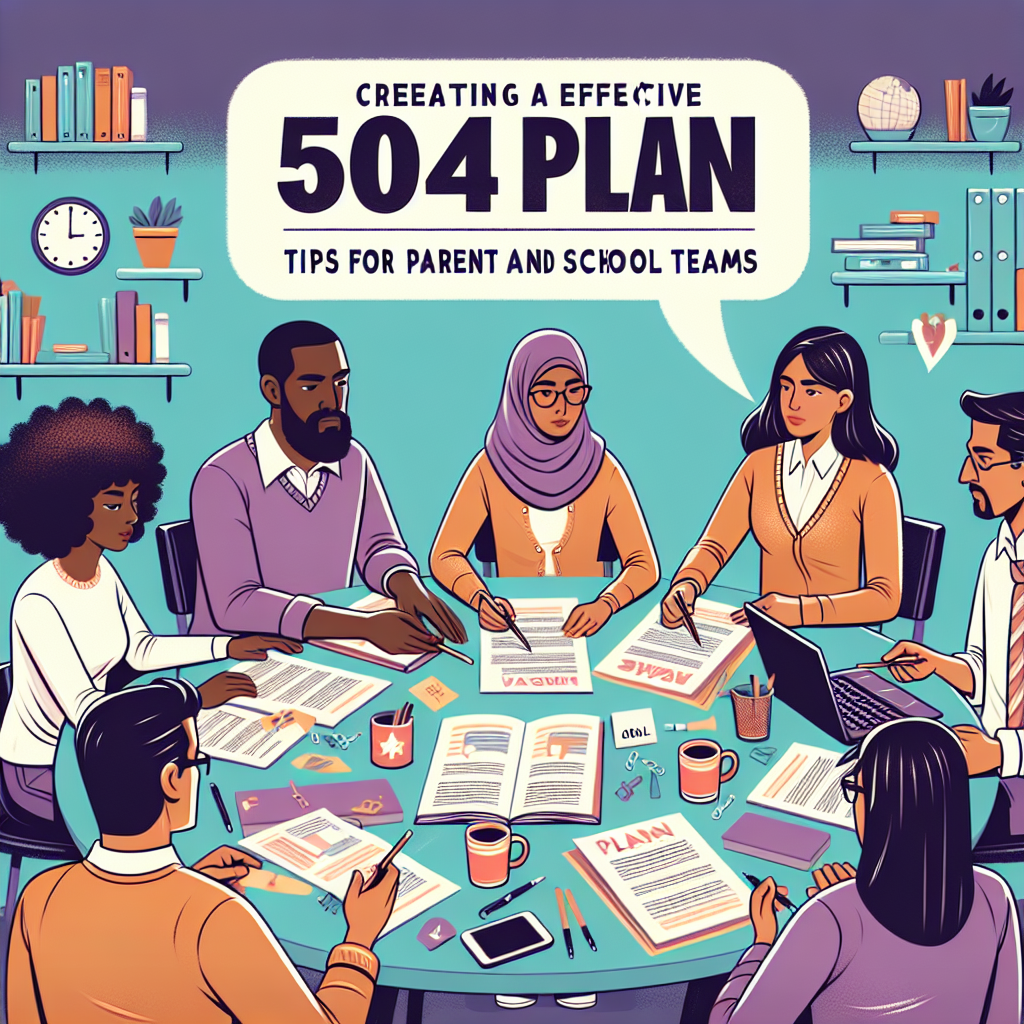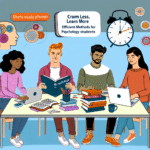
Introduction
Navigating the world of education can be a daunting experience, especially for students requiring additional support due to disabilities. This is where the 504 Plan comes into play, serving as a crucial tool ensuring that students with disabilities receive a free and appropriate public education. Creating an Effective 504 Plan: Tips for Parents and School Teams goes beyond just filling out paperwork; it’s about establishing a collaborative approach that addresses individual student needs, empowering them to thrive academically and socially.
In this article, we will explore the intricacies of 504 Plans, share compelling case studies, and provide actionable insights for parents and school teams alike. Together, we will uncover how to create a supportive educational environment where every student can succeed.
Understanding the 504 Plan
What is a 504 Plan?
A 504 Plan is a legal document under Section 504 of the Rehabilitation Act of 1973 that outlines the accommodations a school must provide to ensure students with disabilities can access the same educational opportunities as their peers. This might include modifications to the physical classroom environment, additional time for assignments, or specialized instruction tailored to the student’s needs.
Why is It Important?
Having an effective 504 Plan not only fosters an inclusive atmosphere but also helps reduce anxiety and barriers to learning. Statistically, students who have well-implemented 504 plans are more likely to achieve their academic goals, reflect higher self-esteem, and exhibit improved social skills.
Steps for Creating an Effective 504 Plan
1. Understand the Eligibility Criteria
Not every student qualifies for a 504 Plan. It’s crucial to understand the eligibility criteria, which typically includes a documented disability that significantly limits one or more major life activities. For parents and school teams, reviewing the criteria ensures that only those who genuinely need support receive it.
Case Study: Sarah, a 10th-grader diagnosed with ADHD, struggled with focus and organization. After understanding the eligibility criteria, her parents were able to advocate for her 504 Plan, ensuring she received necessary accommodations, such as extended test times and a quiet room for exams.
2. Gather Comprehensive Documentation
To create an effective 504 Plan, gather thorough documentation from medical professionals, psychologists, or educational assessments. This documentation serves as a foundation, supporting the need for specific accommodations.
Table 1: Types of Documentation to Collect
| Type of Document | Purpose |
|---|---|
| Medical Records | Establish a diagnosed disability |
| Psychological Evaluations | Assess cognitive and emotional needs |
| Educational Assessments | Identify academic performance and challenges |
3. Collaborate with School Teams
Establishing open communication between parents and school teams is crucial. Joint meetings should include teachers, school counselors, and relevant staff to ensure everyone understands the student’s needs.
Tip: Utilize meeting notes to track discussions and decisions, ensuring everyone is on the same page.
4. Define Specific, Measurable Goals
A key component of an effective 504 Plan is the establishment of clear, measurable goals. These goals should reflect what the student aims to achieve academically and socially.
Case Study: Alex, a 9th grader with dyslexia, had specific goals set in his 504 Plan that included reading at grade level by the end of the academic year, supported by accommodations like audiobooks and specialized tutoring sessions.
5. Identify Necessary Accommodations
When creating accommodations, consider what adjustments will best support the student’s learning experience. Common accommodations might include:
- Extended time on tests
- Preferential seating
- Access to assistive technology
- Modified assignments
It’s essential to tailor these accommodations to fit the student’s unique needs.
6. Review and Revise Regularly
A 504 Plan is not static. Regular reviews—typically at least once a year—allow for adjustments based on the student’s progress and changing needs. Collaborative teams should come together to discuss successes, challenges, and any necessary changes.
Tip: Utilize data from assessments and teacher observations to inform revisions and celebrate achievements.
The Role of Parents
Advocacy
Parents play an essential role in advocating for their child’s best interests. Being informed about rights and responsibilities under the 504 Plan ensures that parents can effectively communicate their child’s needs.
Building Relationships
Fostering positive relationships with educators can significantly impact the successful implementation of a 504 Plan. Open lines of communication help bridge gaps, addressing potential issues before they escalate.
Case Study: Emily’s parents maintained regular communication with her teachers regarding her anxiety-related accommodations. This proactive approach ensured she received the support she needed throughout the school year.
The Role of School Teams
Training and Awareness
School teams must be well-versed in 504 Plans and the specific needs of the students they serve. Training sessions and professional development workshops can equip educators with the tools necessary to implement effective plans.
Continuous Support
Regular check-ins with students who have 504 Plans help ensure they feel supported in their learning environment. Establishing mentorship or buddy systems can further enhance student experiences.
Challenges and Solutions
Communication Barriers
Miscommunication between parents and school teams can hinder the development of an effective 504 Plan. Establishing clear communication channels and creating a shared online platform—like Google Docs—can streamline discussions.
Resistance to Change
Sometimes, school teams may be hesitant to adopt new strategies or accommodations. Providing resources demonstrating the benefits of specific accommodations can motivate educators to embrace the changes needed to support students effectively.
Navigating Emotional Challenges
Students with disabilities often experience emotional challenges that can affect their learning. Mental health resources, including counseling services, should be readily accessible for affected students.
Conclusion
Creating an effective 504 Plan is a collaborative endeavor that requires effort, compassion, and commitment from both parents and school teams. The ultimate goal is to provide students with the necessary resources and support to reach their full potential. Empowering these students is not just about compliance with legal requirements; it’s about fostering a learning environment rich in opportunity and inclusivity.
As we reflect on the significance of Creating an Effective 504 Plan: Tips for Parents and School Teams, keep in mind that patience and persistence will pay off. Let’s work together to empower every student, turning obstacles into opportunities for growth.
FAQs
1. What is the primary purpose of a 504 Plan?
A 504 Plan is designed to provide accommodations for students with disabilities, ensuring they have equal access to education.
2. How do I know if my child is eligible for a 504 Plan?
Eligibility typically requires a documented disability that significantly limits one or more major life activities. Consulting with school staff can help clarify this.
3. How often should a 504 Plan be reviewed?
A 504 Plan should be reviewed at least annually. However, it can be revised as needed if a student’s circumstances change.
4. What should I do if I feel my child’s needs are not being met?
Advocate for your child by discussing concerns with school officials. Document any issues and request a meeting to review accommodations and support.
5. Can accommodations be put in place without a formal 504 Plan?
While informal arrangements may occur, a formal 504 Plan guarantees legally binding accommodations that need to be upheld by the school.
In conclusion, Creating an Effective 504 Plan: Tips for Parents and School Teams serves as a guiding light, illuminating the path towards a supportive and successful educational experience for students with disabilities. Let’s foster collaboration, compassion, and commitment in our educational systems to create a brighter future for all.














